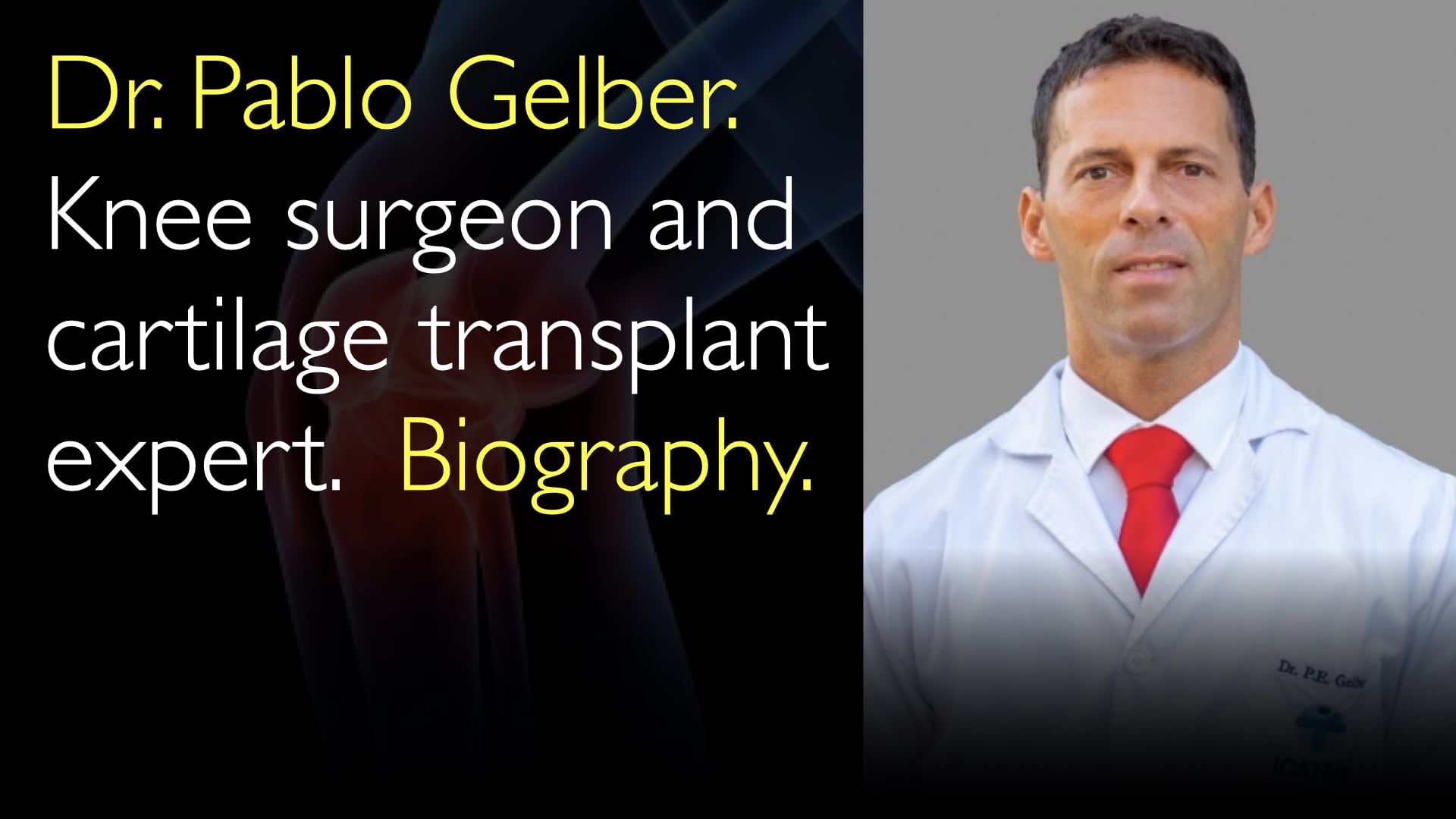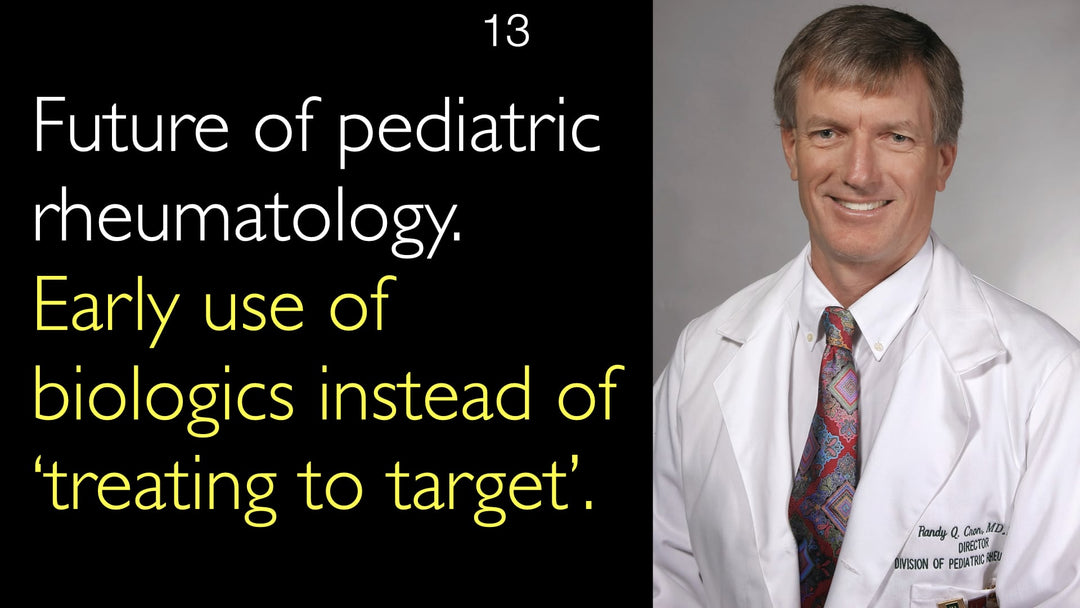Leading expert in knee surgery and sports medicine, Dr. Pablo Gelber, MD, explains the complexities of patellofemoral joint conditions, detailing the differences between instability and pain syndromes. He emphasizes that 95% of patellofemoral pain cases are successfully treated with tailored physical therapy and rehabilitation, while surgical intervention is reserved for specific ligament injuries or cases where high-quality conservative treatment has failed. Dr. Gelber outlines critical rehabilitation protocols, including exercises to avoid initially and the importance of proper technique under specialized guidance.
Patellofemoral Pain Syndrome and Ligament Injury: Diagnosis, Treatment, and Rehabilitation
Jump To Section
- Understanding Patellofemoral Conditions
- Patellofemoral Instability Causes
- Surgical Treatment for Instability
- Patellofemoral Pain Syndrome
- Conservative Treatment Success Rate
- Rehabilitation Protocols and Exercises
- Exercises to Avoid or Modify
Understanding Patellofemoral Conditions
The patellofemoral joint is the anterior part of the knee where the kneecap (patella) articulates with the trochlea, a groove on the femur. According to Dr. Pablo Gelber, MD, this area is a common source of knee problems and is often more complex to treat successfully than other parts of the knee. Conditions affecting this joint are broadly categorized into two groups: patellofemoral instability and patellofemoral pain syndrome. While a patient can present with a mixture of both, they are typically distinct entities requiring different treatment approaches.
Patellofemoral Instability Causes
Patellofemoral instability occurs when the kneecap moves excessively, most commonly dislocating laterally (to the outside). Dr. Pablo Gelber, MD, explains that several anatomical factors can contribute to this instability. A high-riding patella (patella alta) prevents the kneecap from properly engaging in the trochlear groove. General knee malalignment, such as excessive femoral anteversion or tibial rotation, can predispose the patella to dislocation. Furthermore, a shallow or flat trochlear groove (trochlear dysplasia) offers less bony stability for the patella. The primary ligamentous restraint to lateral dislocation is the medial patellofemoral ligament (MPFL), which is often torn during a dislocation event.
Surgical Treatment for Instability
Surgical intervention is often necessary for recurrent patellofemoral instability. Dr. Pablo Gelber, MD, notes that MPFL reconstruction or repair is the most agreed-upon surgical procedure within the medical community to address the ligamentous deficiency. However, a successful surgical plan must be tailored to the individual patient's specific anatomical issues. This may involve a tibial tubercle osteotomy to lower and realign the patellar tendon insertion point or a trochleoplasty to deepen a dysplastic trochlear groove. Dr. Gelber stresses that not every anatomical risk factor found on imaging requires correction; the surgeon must carefully select which procedures will provide the most benefit.
Patellofemoral Pain Syndrome
Patellofemoral pain syndrome (PFPS) is characterized by anterior knee pain without gross instability. Dr. Pablo Gelber, MD, describes it as the most common complaint in an orthopedic office, particularly among young women. The pain is often related to cartilage degradation and patellar maltracking, where the kneecap does not glide smoothly within its groove. This maltracking creates excessive pressure and friction, often on the lateral side, leading to pain. A common cause is a lateralized insertion of the patellar tendon. Unlike instability, the initial treatment for PFPS is almost exclusively non-operative, focusing on correcting the underlying muscular imbalances and biomechanics.
Conservative Treatment Success Rate
Dr. Pablo Gelber, MD, provides a critical statistic: approximately 95% of patellofemoral pain syndrome cases can be successfully addressed with high-quality physical therapy and rehabilitation. He clarifies that his surgical practice sees a disproportionately high number of the remaining 5% because patients are referred to him only after failing conservative care. A significant issue, according to Dr. Gelber, is the variable quality of rehabilitation. The failure of conservative treatment is not always about its duration but often about the specific protocol used. Many rehabilitation centers and gym-based programs employ incorrect or generic approaches that fail to address the precise biomechanical deficits of PFPS.
Rehabilitation Protocols and Exercises
An effective rehabilitation program for patellofemoral pain must be progressive and highly individualized. Dr. Pablo Gelber, MD, advises starting with very basic exercises to reactivate and strengthen the core, gluteal, and quadriceps muscles, particularly the vastus medialis obliquus (VMO). The program should progressively incorporate more complex and demanding exercises as pain allows. The final stages of rehab should include functional movements like squats, but only after the patient has been thoroughly coached on proper form to avoid harmful patellofemoral joint forces. The goal is to rebalance the muscles around the hip and knee to improve patellar tracking and decrease pain.
Exercises to Avoid or Modify
Dr. Pablo Gelber, MD, highlights specific activities that require modification during patellofemoral pain rehabilitation. Deep squats are strongly discouraged in the early phases of treatment due to the extreme patellofemoral joint pressures they generate. Cycling is generally a good low-impact exercise, but patients should avoid standing on the pedals or riding in high gears that increase resistance; they should remain seated. Similarly, swimming is excellent for rehabilitation, but the breaststroke kick should be avoided as it places significant stress on the knee. Freestyle and backstroke are recommended alternatives. The key principle is to fine-tune every activity to the patient's specific condition and pain level.
Full Transcript
Dr. Anton Titov, MD: What are patellofemoral joint injuries and patellofemoral ligament injuries? What is the mechanism of patellofemoral joint and ligament trauma? How do you treat these knee trauma problems?
Dr. Pablo Gelber, MD: The patellofemoral joint is the area of the knee, which is the anterior part of the knee. As I said before, that joint is between the patella, the kneecap, and the trochlea, which is this part of the femur. So, the patellofemoral area or anterior part of the knee, is perhaps the area which causes more troubles than other knee areas.
The patellofemoral joint area is more complicated. It is hard to obtain good and successful outcomes of knee trauma treatment there. There are two big categories of patellofemoral diseases: one is pain, and the other one is knee joint instability. They have to be treated completely differently in some cases.
A patient can have some mixture of those categories. But usually, a patient has either knee joint instability or knee pain. When you have knee joint instability, it means that the kneecap is moving excessively. Most of the time, the patella goes up and out, laterally.
In these cases, there are several factors of kneecap problems that you have to consider. Perhaps the treatment method, for which there is more agreement among the scientific medical community, is treating knee instability due to medial patellofemoral ligament problem. A medial patellofemoral ligament is a ligament that goes from here to here. That ligament has to be reconstructed or repaired after the knee has been unstable once or twice or three times.
But another pathological condition is this, for example. The patella is located too high. The patella doesn’t engage in this area, in the trochlea, which is like this concave area here. The patella doesn’t engage here because you don’t have this engagement. Also, if the patella is too high, you need to lower it.
Also, if the knee alignment is in this position, like this, the patella can more easily go out. If this area, the trochlea, is not like this—this concave area—if this is not the case. If trochlea area is, for example, flat or convex, perhaps you also need to address it in your treatment plan.
So there are so many patellofemoral knee problems. That’s why I’m saying you have to tailor the treatment to each patient. The fact that a patient has all these patellofemoral problem conditions, doesn’t mean that a surgeon has to correct all these problems. Patellofemoral joint treatment selection depends on many subtle factors. You have to consider all aspects.
On the other hand, you may have a knee pain condition called patellofemoral pain or patellofemoral syndrome. In these cases, it is more related to the degradation of the cartilage. There is also some malalignment in the knee joint that a patient can have—for example, this insertion. The patellar tendon can be inserted, attached to, laterally.
So, this can be producing some kind of friction on the lateral side. So, a surgeon has to treat not only the knee joint degeneration that this patellar maltracking produces but also you have to correct the origin of this problem, which is the patellar maltracking. So, as I said, it is a huge area of interest.
And in any case, if we talk about patellofemoral pain, it is probably the most common finding and complaint in our office. That is very common in patients, mostly in young women. It is very, very common. Bilateral patellofemoral pain happens in most of cases because these patients don’t train or because they overtrain.
So you have to re-adapt what they are doing. You have to adjust the way they are training, working out. And you have to balance the different aspects of the different muscles and strengthening and stretching aspects around the knee and the hip. This is how you can improve this patellofemoral tracking to decrease the pain.
So let’s sum up patellofemoral pain syndrome. In 95% of the cases, patellofemoral joint pain conditions can be addressed with physical therapy. In 5% of the patellofemoral injury cases, patients cannot improve their symptoms with a physical therapy treatment and with rehabilitation. In those cases, you have to treat patellofemoral pain syndrome surgically.
And, of course, nowadays, because I am very specialized in the new conditions, many people are referred to me with patellofemoral joint conditions. Many of those patients had already failed conservative treatment. So my patellofemoral syndrome cases are not only 5% of the cases when I have to recommend surgery.
Because most of the patients who come to my office are already referred after they have failed conservative treatment, but that doesn’t mean that patellofemoral problems in general need surgery. This is a very important issue to consider.
Dr. Anton Titov, MD: Eventually, patients get to your office with patellofemoral pain and patellofemoral injuries. How long have they suffered this problem? I assume they have usually tried conservative treatments. But they did not have surgical treatment of the patellofemoral syndrome.
Dr. Pablo Gelber, MD: Yeah. It is not only about the length of time of conservative treatment of the patellofemoral syndrome. But it is the way they do it. Because most of the rehabilitation centers provide the wrong treatment protocol. We are not really in agreement with many rehabilitation methods for the patellofemoral syndrome.
So it’s not only, again, time. Some people have three months or six months of an unsuccessful rehabilitation program. But it is also very important what kind of conservative treatment protocol patients have for the patellofemoral syndrome. Because there are not only good and bad doctors but also good and bad physiotherapists.
The rehabilitation quality that you have is not the same everywhere. The specific patient could perform some kind of stretching in a random gym. Or he or she could be going to a specialized rehabilitation center with various skills and features. Some rehabilitation centers are focused on the different aspects of patellofemoral knee syndrome.
There are some excellent patellofemoral exercises. Unluckily and unfortunately, it is usually a very wrong approach to patellofemoral syndrome from the conservative treatment point of view. That is why in many cases when patients come to my office with patellofemoral pain, I insist on doing good rehabilitation before going for surgical solutions.
Dr. Anton Titov, MD: Are there particular patellofemoral rehabilitation protocols that you avoid? Are there therapies that you suggest patients with patellofemoral injury should avoid?
Dr. Pablo Gelber, MD: Well, it’s not that patients should avoid a particular conservative treatment. Or that they should not do it anymore. In the beginning, as with any medical problem, patients have to start with very basic rehabilitation exercises. And progressively, they can start doing some more complex and strong rehabilitation exercises.
What is not recommended at all is to do a squat, deep squat, at the beginning of the rehabilitation program. That doesn’t mean that they cannot do squats completely. At the last stage, the last steps of the rehabilitation program for patellofemoral joint pain must include squats.
But everyone knows that squats are a huge bag of different variables. Most the people don’t do squats correctly. So it has to be taught how to do specifically this kind of exercise. It’s not only about doing squats. I am just speaking about squats.
But people must remember that in patellofemoral syndrome conditions, the patellofemoral joint pressure increases when you are weight-bearing and during knee flexion. For example, biking is not a bad exercise for patellofemoral joint pain. But if you step on it, like climbing up or even doing different exercises, stepping on the pedals of the bicycle, that increases a lot the pressure on the patellofemoral joint. It can result in pain.
So it’s not that patients cannot bike, but they had to do cycling seated most of the time. There are so many variables in each specific sport or exercise that have to be tailored again to each patient and each sport—for example, swimming. Swimming is very good. But we don’t recommend doing breaststroke in swimming. We don’t recommend to do breaststroke.
But for example, freestyle, when you’re going on your back, that’s very good for rehabilitation. So all rehabilitation protocols have to be fine-tuned for each patient.








